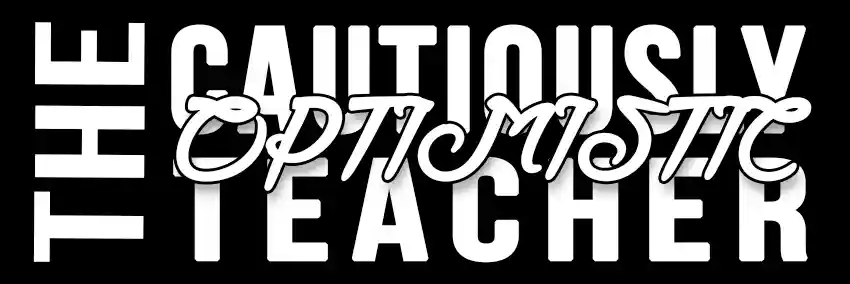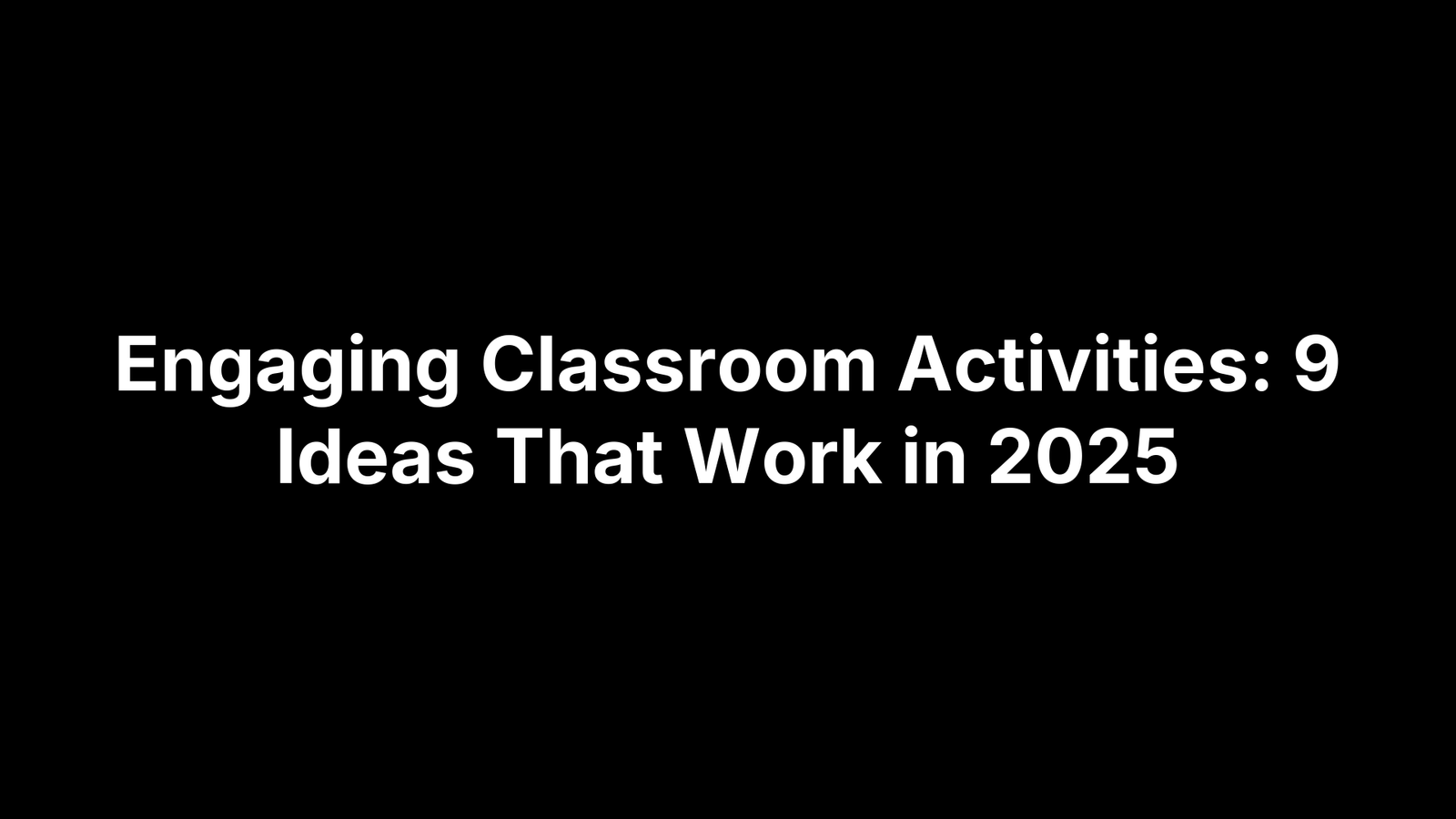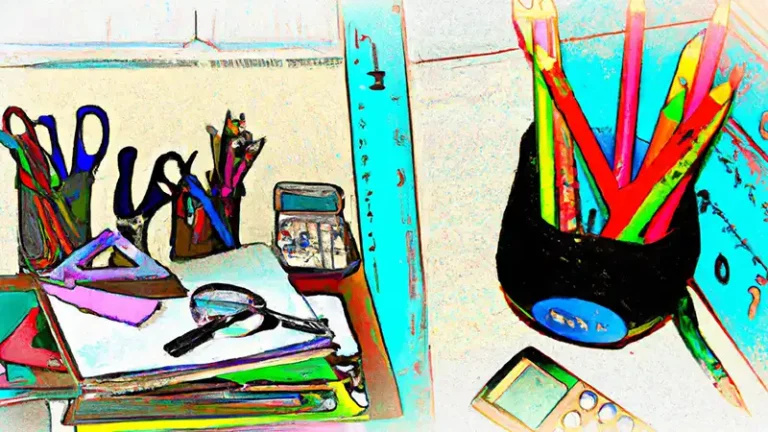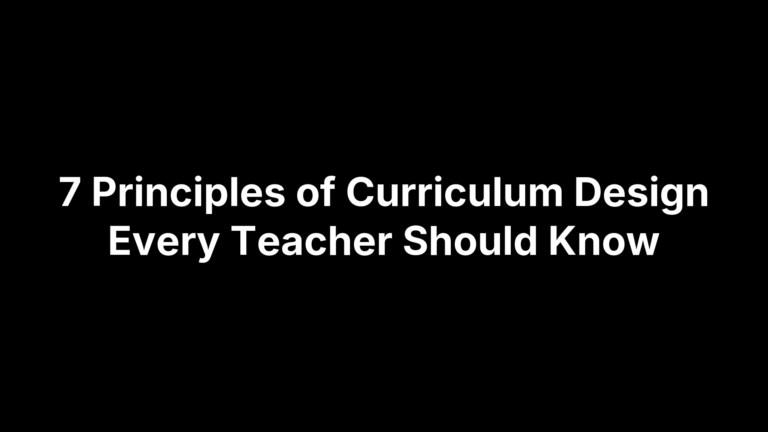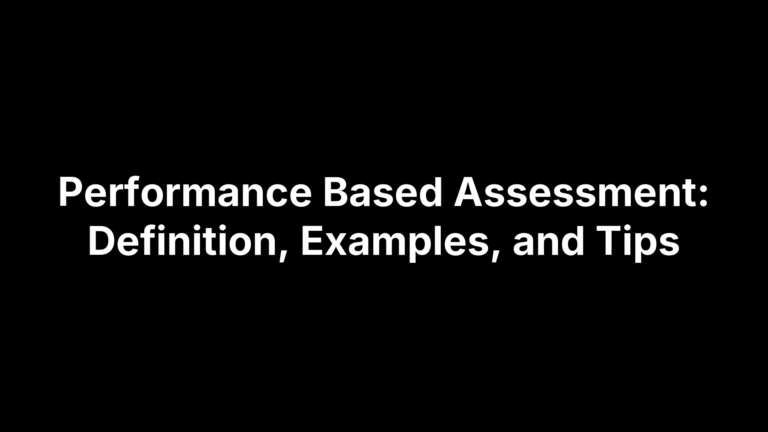Engaging Classroom Activities: 9 Ideas That Work in 2025
You plan an amazing lesson, set everything up perfectly, and then watch half your class zone out within ten minutes. Sound familiar? Getting students genuinely engaged isn’t about flashy gimmicks or complicated tech setups. It’s about using proven strategies that actually get kids thinking, talking, and participating without you having to be the constant source of energy in the room.
This guide breaks down nine classroom activities that consistently work across grade levels and subjects. Each activity includes the specific steps to implement it, why it hooks students, and simple ways to modify it for your classroom. You’ll find everything from AI-powered warmups that personalize learning to collaborative tasks that get every student contributing. These aren’t theoretical ideas you’ll read about and never use. They’re practical activities you can try tomorrow.
1. AI warmups from The Cautiously Optimistic Teacher
You can use AI-generated warmup activities to personalize the first five minutes of class without spending hours creating different versions for each student. The Cautiously Optimistic Teacher offers AI tools that generate customized prompts based on your lesson objectives and student reading levels. These warmups give students an immediate task that connects to your main lesson while you handle attendance and other administrative tasks.
What this activity looks like
Students receive personalized discussion questions or problem scenarios through a digital platform as soon as they enter your classroom. A student reading at grade level might get a standard prompt about the day’s topic, while another student receives the same concept presented with simpler vocabulary or visual supports. You generate these variations in minutes using AI tools rather than creating five separate versions by hand. Each student works independently for three to five minutes, then you transition into whole-class discussion using their responses.
Why this activity engages students
This approach hooks students because they get appropriately challenging material from the moment class starts. Students who typically struggle don’t shut down because the task feels impossible, and advanced learners don’t disengage because the work is too easy. The immediate cognitive activation prevents the dead time where students chat or pull out phones while you take attendance. You also collect data on student thinking before formal instruction begins, which helps you adjust your lesson in real time.
Personalized entry points mean every student can contribute to discussions without feeling lost or bored.
Ways to adapt this activity
You can modify these warmups by changing the content type based on your subject. Science teachers might generate quick observation tasks or prediction questions, while English teachers create character analysis prompts or vocabulary challenges. Adjust the complexity level throughout the year as students develop skills. Use the responses as formative assessment data by reviewing patterns in student answers to identify misconceptions before moving forward with new material.
2. Think pair share 2.0
The traditional think-pair-share gets an upgrade when you add structured accountability tools and rotation systems that prevent the same partnerships from forming each time. This version of the classic collaborative strategy ensures every student participates rather than letting dominant personalities take over discussions. You transform a simple conversation exercise into one of the most effective engaging classroom activities by building in specific protocols that require all voices to contribute.
What this activity looks like
You pose a thinking prompt or question and give students 60 seconds of silent individual processing time. Then you use a randomization method (number cards, digital wheel, seating chart) to pair students rather than letting them choose partners. Partners take turns explaining their thinking for 90 seconds each while the listener takes brief notes on their partner’s ideas. After both partners share, you call on pairs to report what their partner said, not their own answer, which forces active listening.
Why this activity engages students
This structure hooks students because the randomized pairing prevents cliques and comfort zones that let some students hide. The note-taking requirement and partner reporting system create accountability at every step. Students can’t zone out during their partner’s explanation because they know you might call on them to summarize those ideas to the class.
Reporting your partner’s thinking rather than your own builds empathy and ensures genuine listening happens.
Ways to adapt this activity
You can increase complexity by adding a synthesis step where pairs join another pair to compare answers and find common ground. Modify the thinking time based on question difficulty, from 30 seconds for recall questions to three minutes for analysis tasks. Use this strategy as a pre-writing exercise where students develop thesis statements or argument outlines through conversation before drafting.
3. Choice based learning stations
You set up multiple learning stations around your classroom where students choose which activity to complete based on their interests or learning preferences. Each station addresses the same learning objective through different methods like reading, building, discussing, or creating. This approach transforms your classroom into a student-driven workspace where engagement happens naturally because students select tasks that match how they learn best rather than forcing everyone through identical activities.
What this activity looks like
You create four to six stations around your room, each offering a different way to explore the same concept. A lesson on cellular respiration might include a station with a video and questions, another with a hands-on model-building activity, a third with a reading and graphic organizer, and a fourth with a group discussion protocol. Students review the station descriptions you provide at the start of class and choose where to begin. They work through at least two or three stations during the period, documenting their learning in a tracking sheet that you collect for assessment. Each station includes clear success criteria and time limits to keep students moving.
Why this activity engages students
This structure hooks students because choice activates motivation in ways that assigned tasks cannot. Students commit more energy to work they select themselves, and the movement between stations prevents the physical restlessness that kills focus during long periods. The variety of activity types means kinesthetic learners can build while verbal processors discuss, ensuring everyone accesses the content through their strongest channel.
Choice transforms compliance into genuine interest because students take ownership of their learning path.
Ways to adapt this activity
You can modify stations by adjusting the difficulty level at each location, letting students choose both their preferred activity type and appropriate challenge level. Create digital stations alongside physical ones for classes with limited space or when students need technology access. Use station work as review before assessments by setting up locations that cover different units or skills students need to practice.
4. Daily quickwrite circle
You establish a consistent writing ritual at the start or end of each class where students respond to an open-ended prompt in just five minutes. This rapid writing exercise happens in a circular sharing format where students read their responses aloud to the group, creating a predictable routine that builds writing fluency and community. The circle structure transforms quickwrites from isolated tasks into engaging classroom activities that connect students through their ideas and experiences.
What this activity looks like
Students sit in a physical or virtual circle and receive a prompt that relates to your current unit or invites personal reflection. You set a timer for five minutes, and students write continuously without worrying about grammar or punctuation. After writing time ends, students take turns reading their work aloud while classmates listen without interrupting. Each student decides whether to read their entire response or just a portion, giving them control over vulnerability. You participate by writing and sharing your own response, which models the thinking process and builds rapport with students.
Why this activity engages students
This approach hooks students because the time constraint removes perfectionism that blocks many writers from starting. Students know they only need to generate ideas for five minutes, which feels manageable even for reluctant writers. The sharing circle creates social accountability that motivates students to produce something worth reading aloud.
Low-stakes writing with immediate audience feedback builds confidence faster than graded assignments alone.
Ways to adapt this activity
You can modify the sharing protocol by having students exchange papers and read a classmate’s work instead of their own, which reduces anxiety for shy students. Adjust prompt complexity throughout the year, starting with personal narrative topics before moving to academic analysis questions. Use digital platforms for virtual circles where students post responses in a discussion thread and reply to two classmates’ entries.
5. Jigsaw problem solving tasks
You divide a complex problem or topic into distinct sections and assign each student to become an expert on one piece before teaching it to their peers. This collaborative structure turns every student into both a learner and a teacher, creating interdependence that requires genuine participation from everyone. The jigsaw method transforms challenging content into manageable chunks while building accountability through the teaching component that makes this one of the most effective engaging classroom activities for deep learning.
What this activity looks like
You break your class into home groups of four to five students and assign each member a different aspect of the topic to master. These students then move into expert groups with classmates studying the same section, where they collaborate to understand their assigned material thoroughly. After 15 to 20 minutes in expert groups, students return to their home groups and take turns teaching their section to teammates. Each home group member depends on their peers to learn the complete picture, so everyone must contribute their expertise to help the team succeed. You provide structured notes sheets or graphic organizers that guide students through the teaching and learning process.
Why this activity engages students
This structure hooks students because the teaching responsibility creates immediate purpose for their learning. Students study harder when they know classmates are counting on them to explain concepts clearly. The expert group phase builds confidence before the teaching moment, reducing anxiety about presenting information. Peer teaching often reaches struggling students more effectively than teacher explanations because students use language and examples that resonate with their age group.
Students commit more effort when they know peers depend on their understanding rather than just turning in work for a grade.
Ways to adapt this activity
You can modify complexity by adjusting the number of puzzle pieces based on topic difficulty, using three sections for simpler content or six for advanced material. Create differentiated expert materials where struggling students receive scaffolded resources while advanced learners get extension questions. Use jigsaw structure for test review by assigning each expert group a different unit or chapter to master and teach.
6. Interactive gallery walks
You transform your classroom walls into a learning exhibition where students move around the room examining different displays, artifacts, or student work samples related to your current unit. This active strategy replaces passive note-taking with physical movement and peer discussion that keeps energy levels high while students analyze content from multiple perspectives. Gallery walks work as review activities, formative assessments, or ways to showcase student work while building critical thinking skills through observation and analysis.
What this activity looks like
You post eight to twelve stations around your room featuring different content pieces like primary source documents, student project examples, problem-solving scenarios, or thematic quotes. Each station includes a display element and reflection prompt that guides student thinking. Students work individually or in pairs, carrying clipboards or digital devices to record observations and responses at each stop. They spend three to five minutes at each station before rotating to the next one on your signal. Some teachers add a silent walk rule for the first rotation to encourage independent thinking before allowing partner discussions in subsequent rounds. After completing the circuit, you facilitate whole-class discussion where students share patterns they noticed and connections they made between stations.
Why this activity engages students
This structure hooks students because the movement breaks up sitting time that causes physical restlessness and mental fatigue in traditional lessons. Students engage more deeply when examining authentic artifacts or peer work rather than listening to explanations. The rotation system creates natural curiosity about what comes next at each station.
Physical engagement with content in different locations activates memory formation better than sitting in one spot throughout class.
Ways to adapt this activity
You can modify the activity by creating leveled stations where some displays offer foundational content while others present advanced analysis challenges. Add a teaching station where you pull small groups for targeted instruction while other students complete the gallery independently. Use student-created stations where learners design displays teaching concepts to their classmates, turning the gallery walk into both a learning and creation experience.
7. Curriculum escape room
You create a puzzle sequence where students must solve academic challenges to "escape" the classroom or unlock a final reward before time runs out. This game-based learning structure transforms your content review or introduction into an urgent mission that demands teamwork and critical thinking. The escape room format brings competitive energy and narrative excitement to standard material, making it one of the most memorable engaging classroom activities students will experience all year.
What this activity looks like
You design four to six puzzles that students must complete in sequence, each requiring them to apply concepts from your unit to find codes, answers, or clues. Students work in teams of three to five, and solving one puzzle reveals the next challenge or a piece of information needed for the final task. A math escape room might require students to solve equations to find locker combinations containing the next clue, while a history version could have teams analyzing primary sources to decode messages. You set a 30 to 45 minute timer that adds pressure and urgency to the experience. Teams track their progress on a master sheet, and you circulate to provide hints when groups get genuinely stuck rather than letting frustration kill momentum.
Why this activity engages students
This structure hooks students because the time pressure and competitive element trigger focus and collaboration that normal assignments cannot generate. Students who typically disengage during review activities become team leaders when the format resembles games they enjoy outside school. The narrative wrapper (escaping from something, saving someone, solving a mystery) gives academic tasks meaning beyond earning points.
Game mechanics transform tedious review into urgent missions that demand every team member’s contribution and expertise.
Ways to adapt this activity
You can modify difficulty by adjusting the number of puzzle layers or providing differentiated hint cards that teams can use strategically. Create digital escape rooms using Google Forms or specialized platforms when physical setup is impossible or for remote learning situations. Use escape room structure for unit introductions where solving puzzles reveals key vocabulary and concepts students will study rather than just reviewing material they already learned.
8. Student led mini lessons
You shift teaching responsibility to students by having them prepare and deliver short instructional segments to their classmates on assigned topics or concepts. This approach transforms students from passive recipients into active instructors who must deeply understand material to explain it effectively to others. Student-led instruction builds confidence, strengthens content mastery, and creates variety in your teaching methods while giving you time to observe learning patterns and provide targeted support during the preparation phase.
What this activity looks like
Students receive topic assignments three to five days before their teaching date, giving them time to research and plan a 10 to 15 minute lesson. You provide a planning template that requires them to include an opening hook, direct instruction with examples, a practice activity for classmates, and a closing check for understanding. Each student teacher presents their mini lesson while you observe from the back of the room, taking notes on both the presenter’s performance and the class’s comprehension. Classmates complete a feedback form rating the clarity of explanations, quality of examples, and effectiveness of practice activities. After each lesson, you add clarifying information or corrections as needed before moving to the next student teacher.
Why this activity engages students
This structure hooks students because the authentic audience of peers creates motivation that worksheets cannot generate. Student teachers work harder preparing lessons when they know classmates are counting on them for understanding. The variety of teaching styles keeps the class engaged as different personalities bring unique energy and approaches to presenting material.
Teaching content to peers demands deeper understanding than simply completing assignments for grades.
Ways to adapt this activity
You can modify complexity by assigning team teaching where pairs collaborate on lessons, reducing individual pressure while building partnership skills. Adjust lesson length based on topic difficulty and student experience, starting with five minute segments before moving to longer presentations. Use student-led lessons for review sessions before tests where each presenter covers a different unit concept that classmates need to master.
9. Cross class collaborations
You partner with another teacher in your building or a different school to create shared learning experiences where two classes work together on projects, discussions, or problem solving tasks. This collaboration structure exposes students to new perspectives and ideas from peers they don’t see daily while building their ability to communicate with unfamiliar audiences. Cross class partnerships transform isolated classroom work into authentic engaging classroom activities that mirror real world collaboration across teams and organizations.
What this activity looks like
You coordinate with another teacher teaching the same subject or complementary content to design a project both classes will complete simultaneously. Students from both classes connect through video calls, shared digital workspaces, or in person meetings to exchange ideas and collaborate on deliverables. A science teacher might partner with another school’s class to compare local environmental data, while English teachers could have classes analyze the same novel and debate interpretations through online forums. Both teachers create matching rubrics and timelines that keep classes synchronized throughout the project. Students present final products to combined audiences from both classes, creating accountability to peers beyond their usual classroom community.
Why this activity engages students
This structure hooks students because authentic external audiences raise the stakes beyond impressing just their regular teacher and classmates. Students prepare more thoroughly when presenting to unfamiliar peers who might judge their work differently. The novelty of outside collaboration breaks the monotony of working with the same 25 classmates all year.
Collaboration with external classes creates fresh social dynamics that re-energize student participation and effort.
Ways to adapt this activity
You can modify partnerships by connecting with classes at different grade levels where your students mentor younger learners or receive coaching from older students. Adjust collaboration frequency from one time exchanges to ongoing partnerships that meet monthly throughout the semester. Use international partnerships through platforms that connect global classrooms, giving students exposure to different cultures and perspectives while practicing your subject content.
Final thoughts
These engaging classroom activities work because they shift the energy in your room from teacher-centered to student-driven instruction. You don’t need expensive materials or hours of preparation to implement any of these strategies. Each activity gives students authentic reasons to participate rather than forcing engagement through grades or consequences alone. The variety ensures you can match methods to your teaching style and student needs rather than adopting someone else’s approach that doesn’t fit your context.
Start with one or two activities that address your biggest classroom challenge right now. If students disengage during opening routines, try AI warmups or quickwrite circles. If collaborative work feels flat, implement jigsaw tasks or cross-class collaborations. Build your repertoire gradually instead of overwhelming yourself with nine new strategies at once. Your classroom engagement will improve through consistent use of proven methods rather than constantly searching for the next perfect activity.
Want more practical teaching strategies and resources? Explore The Cautiously Optimistic Teacher for lesson planning tools, AI helpers, and classroom management techniques that actually work.
